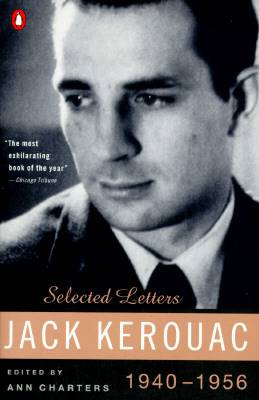

Selected Letters, 1940-1956
by Jack Kerouac and Ann Charters
Thirty years after his death, popular and academic interest in the life and work of Jack Kerouac have reached an all-time high. The first volume of his selected letters, edited by renowned biographer and Beat scholar Ann Charters, was widely regarded as a vital and momentous contribution to Kerouac scholarship. In Jack Kerouac: Selected Letters 1957-1969, the second and final volume of his correspondence, Charters highlights letters written to his closest friends and colleagues that paint a heart-wrenching portrait of this broken American genius.The first volume of Kerouac's letters documented the writer's discovery of his "spontaneous prose" method and the inspired composition of 11 books between 1951 and 1956. "The second volume," writes Charters, "demonstrates that the publication of his books and the attendant publicity and hostile critical response literally destroyed him." The book opens with letters written prior to the publication of On The Road, an event that would make Kerouac famous overnight and permanently alter the landscape of American literature, and concludes only days before his death in St. Petersburg, Florida, at age 47.Charters provides indispensable commentary between the letters to give the biographical background of what was happening in Kerouac's life, while allowing the writer to comment on his own work as much as possible. Charters also includes some letters from his friends, such as Gary Snyder's reaction to being the fictional hero of The Dharma Bums, and Lawrence Ferlinghetti's letter to Time magazine defendingKerouacfrom malicious attacks by critics on his books and lifestyle. Occasionally Kerouac responded to fan mail and queries from academics, and some of these replies have also been included. The few letters from his mother and from his third wife, Stella, show just how dependent the writer was on his family.Kerouac is often thought of as being very much like the rugged, wandering, Zen-loony characters that populate his books. But by the late '60s, while pals Snyder, Allen Ginsberg, and Peter Orlovsky were on pilgrimage in Nepal, he was living with his mother, getting rejected on credit card applications. A severe alcoholic, Kerouac suffered rapidly declining health, and he grew increasingly bitter and paranoid. Each book by Kerouac that was published in hardcover after The Dharma Bums was quickly remaindered, yet despite this, Kerouac kept writing right up to the day he died.Unfortunately, his greatest successes came too late for him to enjoy. At least eight works of Kerouac's fiction, poetry, and Buddhist writings have been published posthumously, not to mention the countless studies and biographies that fill the shelves of bookstores each year. In 1999, Jack Kerouac and the Beats are a business unto themselves.Soon after completing her own doctorate work in American literature at Columbia in 1966, Ann Charters had the crazy idea that the Beats needed a scholar like herself to secure a place for them in our nation's history. Thirty years later it is quite clear just how crucial a role she has played in the literary afterlife of Jack Kerouac.Cary Goldstein
Release Date:
February 29, 1996

